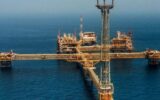Accelerating gas field development plans

According to Energy Press, Iran’s possession of one of the world’s largest gas reserves has provided a unique opportunity to dominate the regional and global energy markets. Massive projects such as the development of the South Pars phases, the Central Regions fields, Farzad, Bilal and other independent fields are symbols of this ambition. According to the Ministry of Oil, the country’s daily natural gas production has exceeded 1,000 million cubic meters, and these figures are the result of the acceleration of the implementation of development projects. However, this rapid growth has always been accompanied by concerns; is the development of Iran’s gas fields sustainable and in line with long-term interests, or is it caught in the mirage of injecting resources and ignoring efficiency?
Hidden corners of development: hidden costs, setbacks, and failures
Ahmad Alavi, an energy expert and university professor, says: “The development of gas fields in Iran is mainly based on three pillars: increasing national power, protecting the capacity of shared reservoirs (such as South Pars in competition with Qatar), and providing the country with sustainable gas. But often, the dominance of a short-term view and budgetary pressures have caused speed of implementation to replace quality and sustainability.”
He continued: A review of the country’s important gas development projects shows that many phases and fields, at the very beginning or semi-complete stage, are facing chronic financing problems, lack of up-to-date technology, contractor delays, and a vacuum in environmental assessment. Despite large investments, the middle phases of South Pars have witnessed costly delays; The Phase 11 project – which was supposed to be a showcase for Western technology transfer – was repeatedly exchanged between foreign companies (Total, CNPC and Petropars) and ultimately proceeded with a half-baked domestic model without the transfer of key drilling and extraction equipment.
Financing; a recurring obstacle
According to this energy expert, the development of gas fields requires huge investments from domestic and foreign sources. According to Dr. Alavi, “Each new phase of South Pars requires capital equivalent to $2 billion, and many independent fields such as Farzad and Central Iran are waiting for capital from public funds or foreign finance.” In practice, foreign sanctions and a lack of domestic resources have caused many projects to either enter a slow phase or fall short of the quality of the initial targets. Projects such as the Bilal or Kish gas fields have been caught between promises and implementation for years. The most obvious result of this crisis has been the excessive reliance on the National Oil Company’s foreign exchange resources and the double pressure on the National Development Fund’s credits.
Localization and technology; Opportunity or slogan?
One of the common slogans in development plans is “technology localization,” but the reality is that in aspects such as deepwater drilling, advanced production platform management, and enhanced recovery processes, Iran is still heavily dependent on complex foreign equipment.
Alavi clarifies that although Iran’s technical engineering growth in platform construction, compressor installation, and refinery design has been impressive, there is still a significant gap with global standards in areas such as high-pressure compressor equipment, advanced monitoring systems, intelligent field management software, and deep drilling tools. This weakness has caused the quality and speed of some development phases (such as phases 13, 14, and parts of phase 16) to noticeably decrease under sanctions.
Development in the shadow of regional imbalance
Another node in the development of gas fields should be sought in the geographical dispersion and imbalance. Iran, with a diverse set of fields; From the south (South Pars) to the northeast (Khangiran-Shafteh), the center (independent fields such as the Shurijeh field), the west and the Persian Gulf face each other. However, more than 70 percent of the development focus has been on South Pars and the joint fields, while the northern and northeastern provinces remain dependent on Turkmen gas imports or long-term transmission lines, which sometimes creates increasing cross-sectional crises.
Tags:gas
- Comments sent by you will be published after approval by site administrators.
- Comments that contain slander will not be published.
- Comments that are not in Persian or not related to the news will not be published.

Comments
Total comments : 0 Awaiting review : 0 Date: 0